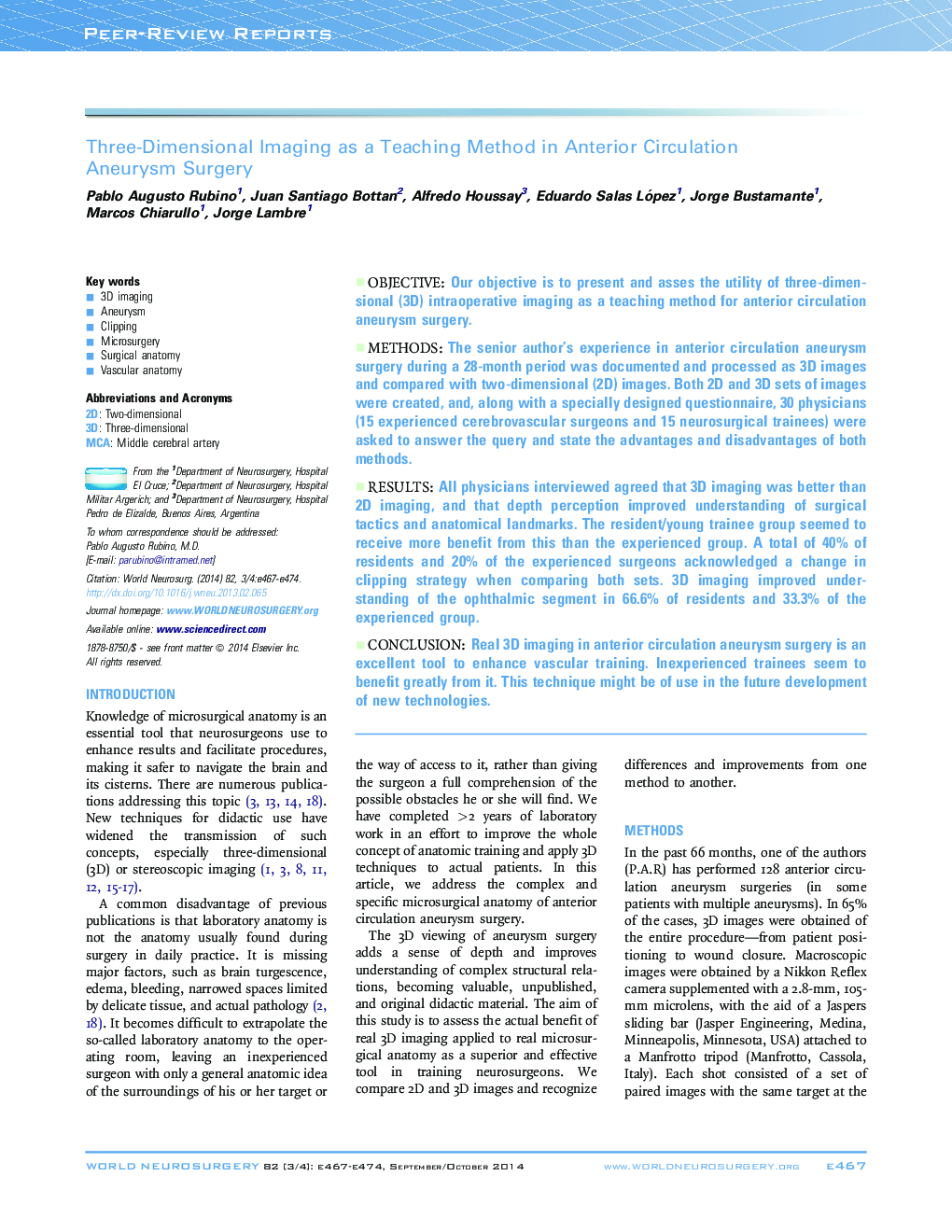| Article ID | Journal | Published Year | Pages | File Type |
|---|---|---|---|---|
| 3095493 | World Neurosurgery | 2014 | 8 Pages |
ObjectiveOur objective is to present and asses the utility of three-dimensional (3D) intraoperative imaging as a teaching method for anterior circulation aneurysm surgery.MethodsThe senior author's experience in anterior circulation aneurysm surgery during a 28-month period was documented and processed as 3D images and compared with two-dimensional (2D) images. Both 2D and 3D sets of images were created, and, along with a specially designed questionnaire, 30 physicians (15 experienced cerebrovascular surgeons and 15 neurosurgical trainees) were asked to answer the query and state the advantages and disadvantages of both methods.ResultsAll physicians interviewed agreed that 3D imaging was better than 2D imaging, and that depth perception improved understanding of surgical tactics and anatomical landmarks. The resident/young trainee group seemed to receive more benefit from this than the experienced group. A total of 40% of residents and 20% of the experienced surgeons acknowledged a change in clipping strategy when comparing both sets. 3D imaging improved understanding of the ophthalmic segment in 66.6% of residents and 33.3% of the experienced group.ConclusionReal 3D imaging in anterior circulation aneurysm surgery is an excellent tool to enhance vascular training. Inexperienced trainees seem to benefit greatly from it. This technique might be of use in the future development of new technologies.
